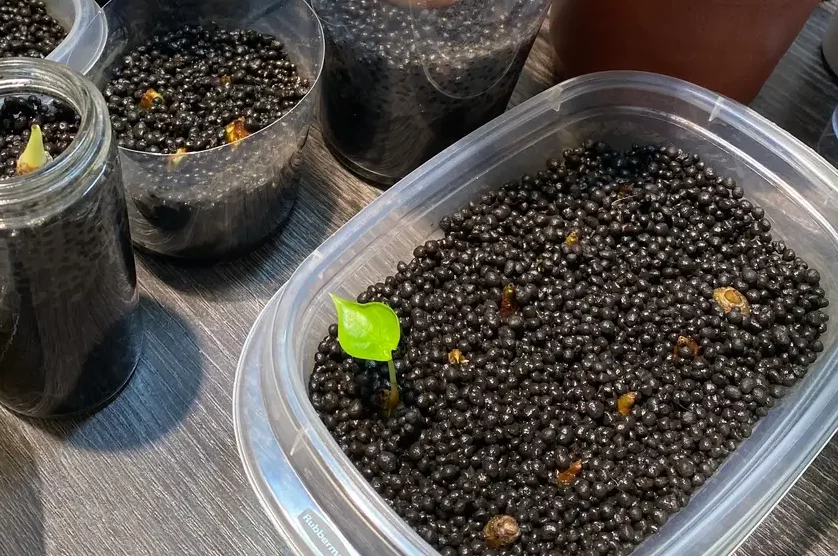Introduction: What Makes Fluval Stratum Unique?
Fluval Stratum is a versatile, volcanic soil substrate that has captured the attention of both aquarium hobbyists and houseplant enthusiasts. Originally designed to create a fertile environment for aquatic plants, it has now become a popular choice for those growing terrestrial plants as well. What sets Fluval Stratum apart is its unique ability to provide essential nutrients, promote root growth, and maintain an optimal pH level. Whether you’re an aquascaper or a houseplant lover, Fluval Stratum offers a nutrient-rich solution for plant care.
What is Fluval Stratum Made Of?
Fluval Stratum is primarily composed of volcanic soil collected from the foothills of Mount Aso, an active volcano in Japan. This natural, porous substrate is rich in minerals and nutrients, making it an excellent medium for plants that need proper root development and access to essential trace elements. The small, lightweight particles of Fluval Stratum are known for their ability to retain moisture while preventing root rot, a common issue for many plant types.
Why Use Fluval Stratum for Plants?
Traditionally used in aquariums to support the growth of aquatic plants, Fluval Stratum has a natural ability to maintain an ideal pH level for plants. This makes it an excellent substrate for houseplants as well, providing the right balance between water retention and drainage. The substrate’s porous nature allows for excellent aeration, which prevents compaction and allows plant roots to expand freely. The added nutrients from the volcanic soil help houseplants flourish, especially those that require more specific conditions to thrive.
How to Use Fluval Stratum for Houseplants
Fluval Stratum is incredibly easy to use for houseplants. Simply layer it at the bottom of a plant pot to create a solid foundation for your plants’ roots. For best results, it’s recommended to combine Fluval Stratum with a standard potting mix. This mix helps balance water retention and ensures the plant has access to a steady supply of nutrients. Fluval Stratum’s lightweight structure also makes it ideal for delicate plants that need loose, aerated soil to avoid root compaction. Another benefit is its slow-release of nutrients, meaning your plants will have a long-term supply of minerals without the need for constant fertilization.
Best Plants for Fluval Stratum
Certain plants respond exceptionally well to Fluval Stratum, especially species that thrive in humid or aquatic environments. In aquariums, Fluval Stratum promotes the healthy growth of aquatic plants like Java fern and Anubias, which require good root anchoring. For houseplants, it works wonders with moisture-loving plants such as ferns, pothos, and monstera. These plants benefit from the substrate’s ability to retain water while providing proper drainage, preventing both overwatering and drying out.
Aquascaping with Fluval Stratum
For those interested in aquascaping, Fluval Stratum is a top choice for creating lush, underwater plant landscapes. Its porous structure encourages root penetration, allowing aquatic plants to firmly establish themselves in the substrate. Fluval Stratum also enhances microbial growth, which is essential for maintaining a balanced, healthy aquarium environment. The dark, neutral tone of Fluval Stratum also provides a beautiful contrast to the vibrant greens of aquatic plants, making it an aesthetically pleasing addition to any tank.
Fluval Stratum for Propagating Plants
If you’re looking to propagate plants, Fluval Stratum offers an excellent medium. Its light, airy structure allows cuttings to root quickly, and the constant supply of moisture helps young plants develop strong root systems. Whether you’re propagating houseplants or aquatic plants, Fluval Stratum creates the perfect environment for new roots to thrive. The added benefit of natural minerals means that propagating plants will get a healthy start without needing additional nutrients early on.
Common Challenges and Tips for Success
While Fluval Stratum is a great substrate, it does come with some challenges. One common issue is compaction, which can occur if the substrate is not layered properly or if too much is used in a confined space. To avoid this, it’s best to use Fluval Stratum in combination with other soils or substrates. Another potential challenge is overwatering, as Fluval Stratum retains moisture. Be mindful of the watering schedule to prevent the roots from sitting in water for too long, which can lead to root rot.
Conclusion: Enhancing Plant Growth with Fluval Stratum
Fluval Stratum is a game-changer for both aquatic and terrestrial plants. Whether you’re using it in an aquarium or for houseplants, this volcanic substrate provides a natural, nutrient-rich environment that promotes healthy root growth, improves moisture retention, and helps maintain optimal pH levels. By incorporating Fluval Stratum into your plant care routine, you’ll give your plants the best chance at thriving, whether they’re growing underwater or in your living room.

